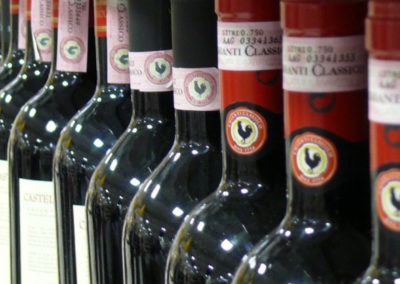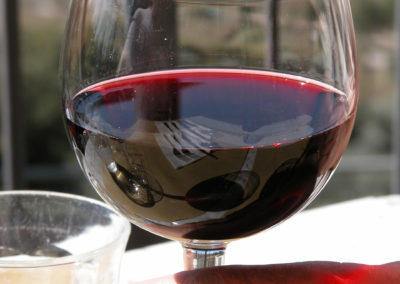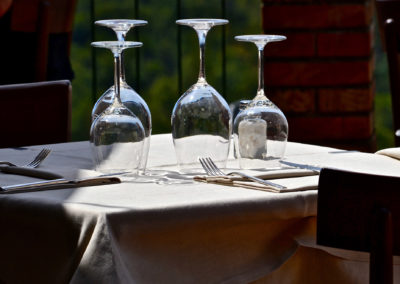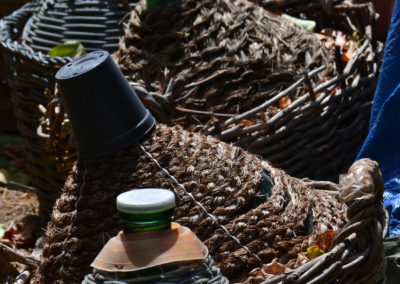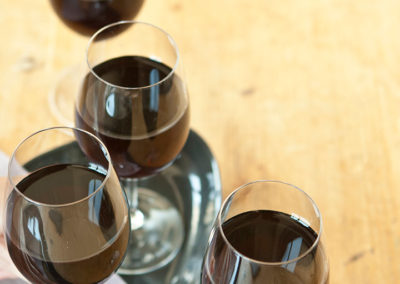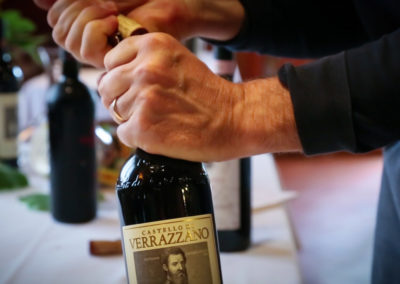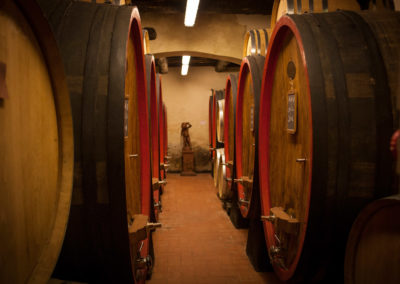With over 800 wine grape varieties, 20 uniquely designated winegrowing regions, and hundreds of years of winemaking history on the books, Italy’s wine scene is a glorious adventure from grape to glass.
So, I asked my great friend Bernardo Conticelli, extraordinary Florentine sommelier to share his wine-tasting basics: what to be aware of as you approach the glass, take your first glorious sip, and actually send the wine “down the hatch.” He describes the simple steps as well as the smallest and most subtle things you might not think to notice–if not brought to your attention.
In addition to Bernardo’s 13 beginner steps to drinking wine, we’ve added colorful commentary and tips from certified sommelier and winemaker Giuditta Parisi.
Saluti! “Cin Cin”
13 Simple Steps for Tasting Wine
1. Look carefully at the wine in the glass and check the color: is it white, pink or rosé?
2. Determine the intensity of the color.
White wines: The deeper and more full-bodied it is, the richer and more matured it is.
Red wines: If it’s lighter and you can read through the glass, it’s usually from specific grape varieties like Sangiovese, Nebbiolo, Pinot Noir etc. If it’s deeper, it’s usually from grape varieties like Merlot, Cabernet Sauvignon, Malbec, Montepulciano, Nero d’Avola.
3. Check the rim of the red wine.
If the rim of the glass holds the same intensity of color of wine in the center, it’s a young wine.
If the rim is a more brick/tawny color, it means it has been aged in barrels and in bottles for some years.
4. Carefully swirl the glass two to three times, gently moving the wine inside to let the volatile aromas come up toward you.
“Hold the glass at the base of the stem (and not the bowl of the glass) to avoid heating up the wine or so that your own skin is not in direct contact with the glass and therefore doesn’t affect the overall olfactory evaluation of the wine.”
-Giuditta Parisi
Certified Sommelier & Winemaker at Nostra Vita Winery in Montalcino, Tuscany
Smell the wine and notice what you smell. The aromas can be floral, fruity and/or spicy.
Remove your nose from the glass—just 4 to 5 seconds are enough. Then move the glass away and swirl it around again in a circular motion.
7. Repeat this swirling action 2 to 3 times before sipping so you can better discover all the aromatic complexities of the wine.
8. Taste the wine. Take a sip of the wine and keep it in your mouth for a few seconds, moving it all around your mouth before you swallow.
9. Pay attention to your mouthful: Every aspect of your mouth will give you information about the wine.
10. Notice acidity. Do you feel some tingling at the bottom sides of your mouth? Does your mouth start watering and produce saliva? This means the wine hold a very good acidity.
11. Notice tannins. If you feel some dryness or astringency in center of your tongue, those are the tannins producing this sensation. Red wines usually have tannins, while white and rosé wines do not.
12. Observe the body of the wine. If It feels like it’s filling your mouth, it’s a full-bodied wine. If it feels quite light and vertical and goes straight down your throat, it’s a light-bodied wine.
13. Repeat steps 1–12 with other wines until you find a vintage you like to take home!
“I suggest women avoid wearing strong perfumes before the tasting to avoid disguising or covering up the taste and natural odors of the wine. And, don’t wear lipstick!”
-Giuditta Parisi
Certified Sommelier & Winemaker at Nostra Vita Winery in Montalcino, Tuscany
How to Read an Italian Wine List
Most wine lists do not give you very much information beside the price, producer, and vintage. It’s wonderful when a wine sommelier is close by to help guide you. But when there’s no one to assist you, begin by decoding the following pertinent information:
Producer
The producer’s name can either be a single producer like Valentini, a cooperative such as Produttori del Barbaresco (56 member group) or a larger wine brand such as Ruffino. Knowing what type of producer can be helpful in understanding if the wine is rare or easy to find.
Type of Wine
Like France, Italian wines are often named after a region and each region is classified. For instance, a wine labeled Chianti Classico DOCG is from a sub-region of Chianti in Toscana that requires a minimum composition of 80% Sangiovese grapes. Alternatively, a “Named Wine” like Ruffino “Modus” on an Italian wine list (classified as IGT) is an atypical blend of unclassified grapes. Super Tuscan falls into this category.
Region
Each of the 20 Italian wine regions specialize in different types of wine and different grape varieties. Learning the basics of the leading Italian wine regions will help you read an Italian Wine list.
Vintage
Vintage variation greatly affects the produce of Italy. As a general rule, older vintages tend to have less prominent tannin.
Bernardo Conticelli
Sommelier, Wine and Olive Oil Producer
Bernardo Conticelli is an expert Italian wine sommelier, wine marketer, and winemaker himself.
He lives between Florence and Paris where he collaborates with foreign companies to organize tasting courses, introducing the vast geography of Italian wines. Bernardo also makes his own Sangiovese wine with two fellow friends and wine lovers Adriano Zago and Ciro Beligni. They grow their vines at 600 meters in Lamole, in Chianti Classico. Vinified first in stainless steel, then terracotta amphora, then wood, it’s a pretty wine with high cherry notes that are gorgeous on the palate.



